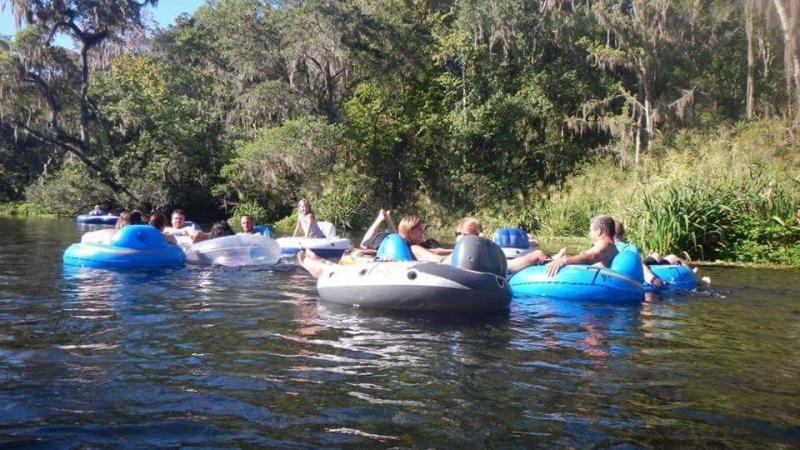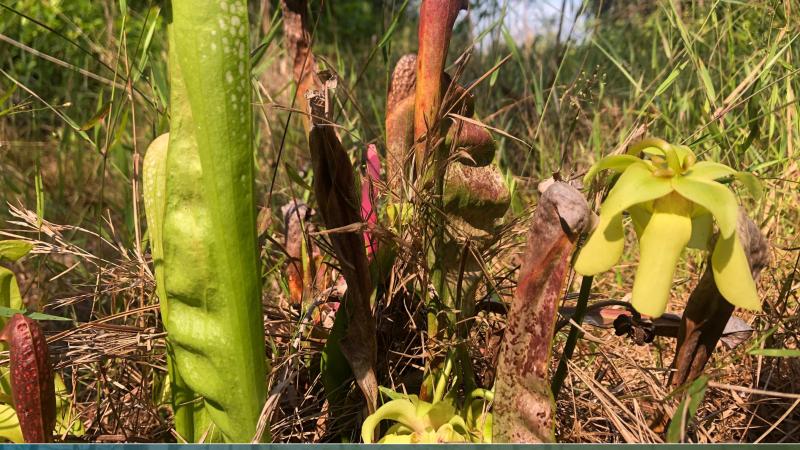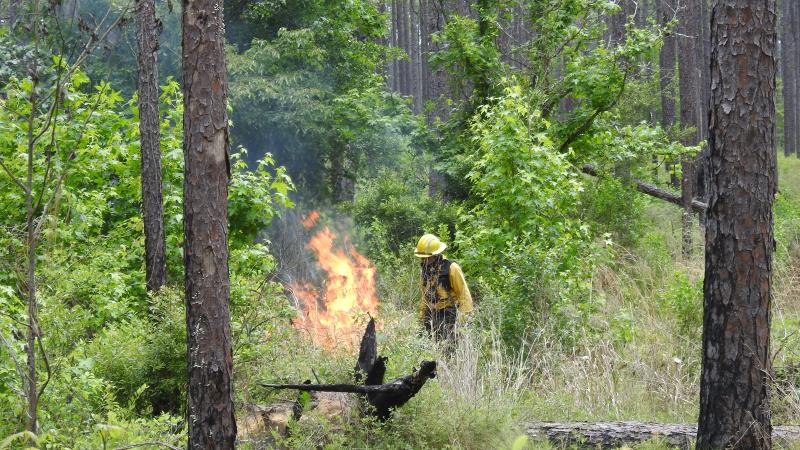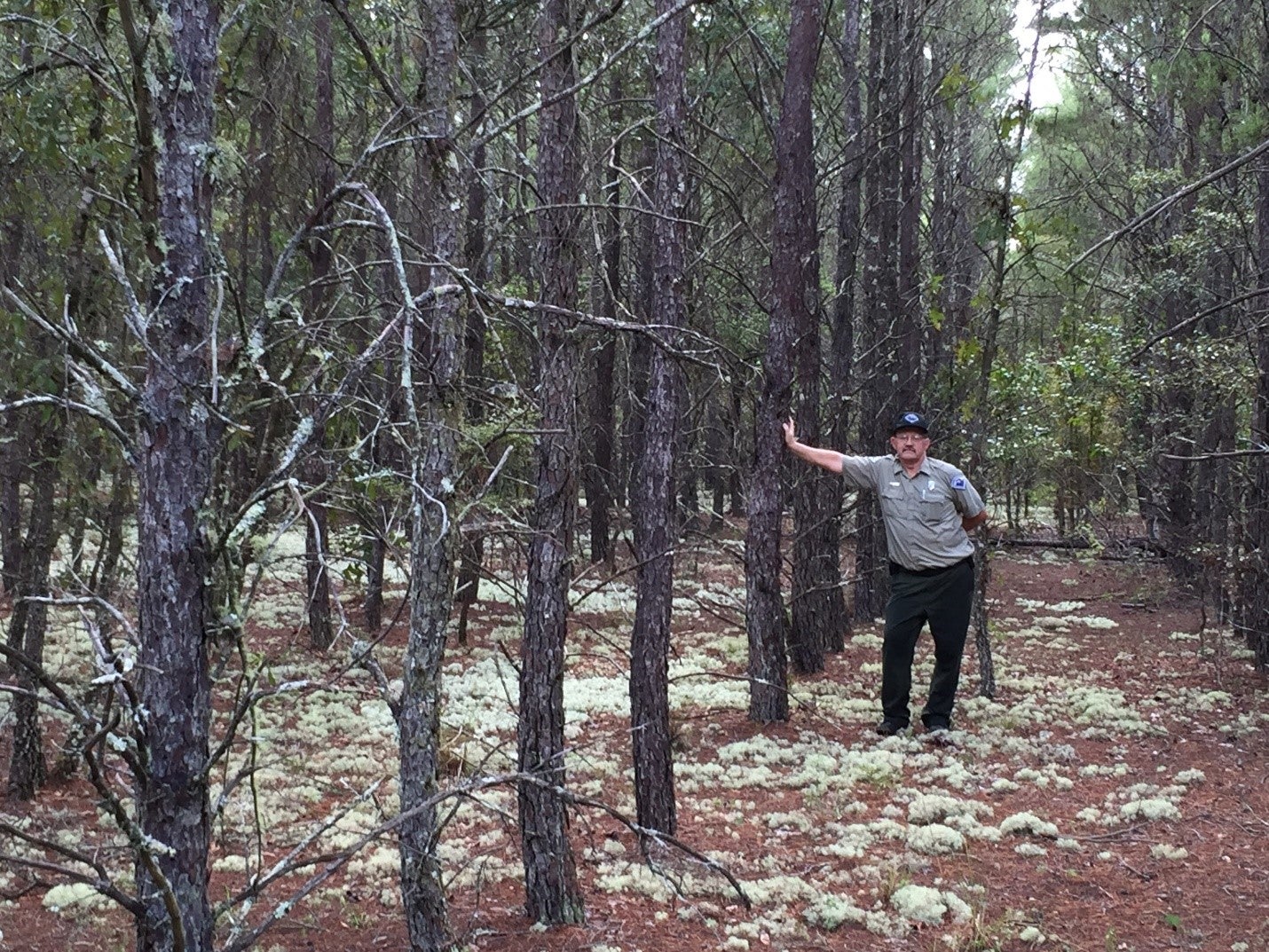
Restoring the Sweetwater Creek Tract
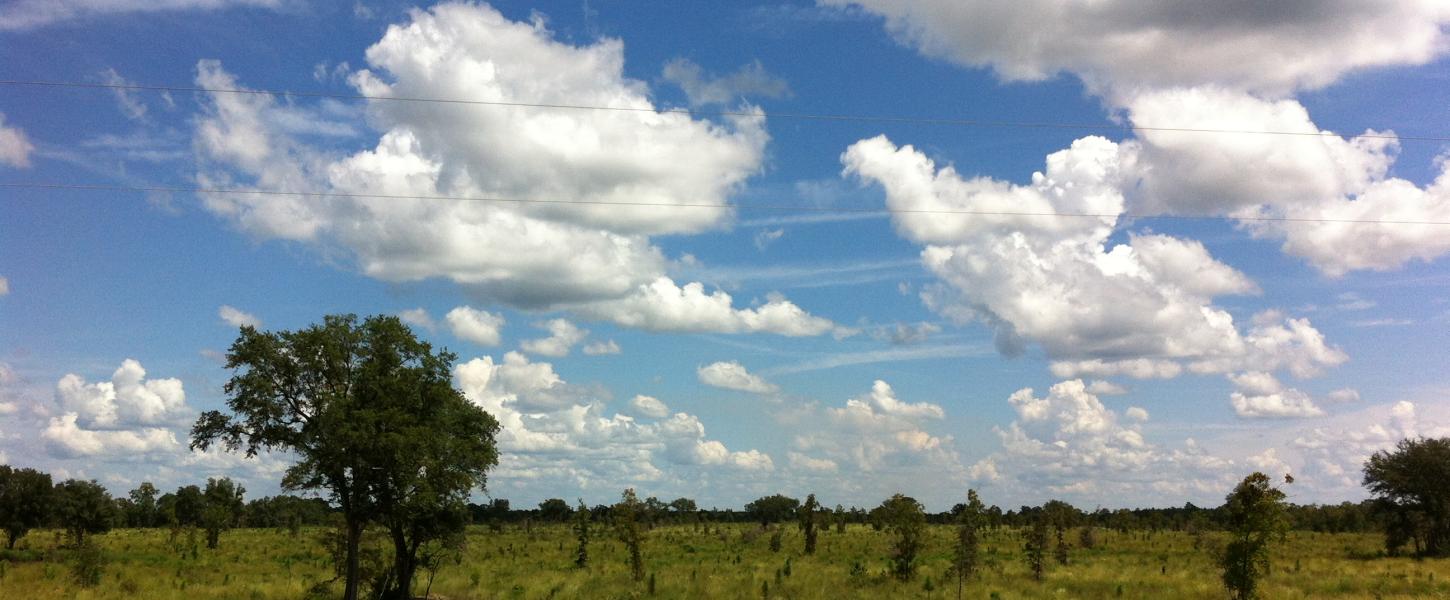
Acquiring the Sweetwater Creek Tract
In 2001, the state of Florida acquired the roughly 7,000-acre Sweetwater Creek property from the St. Joe Company. This acquisition expanded Torreya State Park’s critical role in restoring and protecting one of the most species-rich habitats in North America. Deep steephead ravines carve through the property’s rolling hills on their way to the Apalachicola River.

These cool ravine microhabitats provide sanctuary for many rare species including the Torreya tree (Torreya taxifolia), Florida yew (taxus floridana), ashe magnolia (magnolia machrophylla var. ashei), pyramid magnolia (magnolia pyramidata), fireback crayfish (cambarus pyronotus) and Apalachicola dusky salamander (desmognathus apalachicolae).
Restoration of the Sweetwater Creek Tract
The roughly 4,600 acres of uplands surrounding the ravines had long been converted to high yield industrial timberland by the prior landowner. The park’s ongoing transformation of this property from sand pine plantation to an ecologically functional longleaf pine/wiregrass ecosystem represents the largest sandhill restoration project in Florida Park Service history.
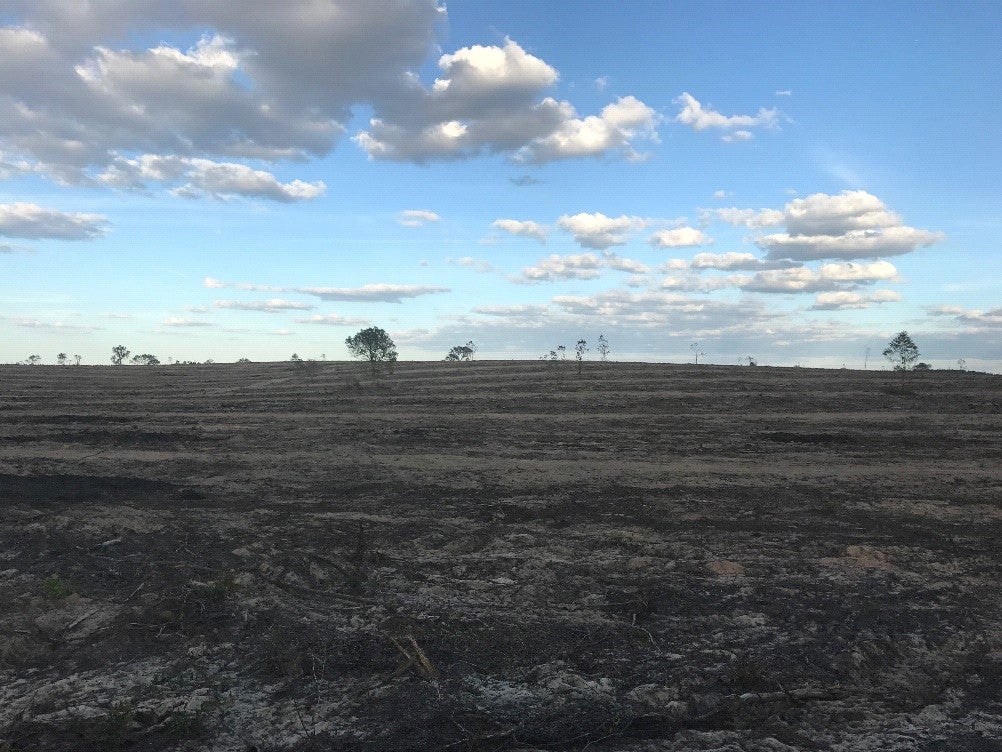
This effort has involved many partners, including the Nature Conservancy, the Florida Forest Service and the U.S. Fish & Wildlife Service. It is a shining example of the Florida Park Service’s core mission to restore and preserve biologically productive lands that sustain our environment.
The restoration takes place in five distinct phases: timber harvest, site preparation, ground cover seed collection and seed planting, longleaf pine planting and finally, post restoration management.
Timber Harvest and Site Preparation Phases
The land is then leveled by removing all the remaining plant matter, called windrows. The coarse and fine woody debris, called logging slash, that is generated from the logging operations, are then raked and cleared to make the restoration zone ready for wiregrass seeding.
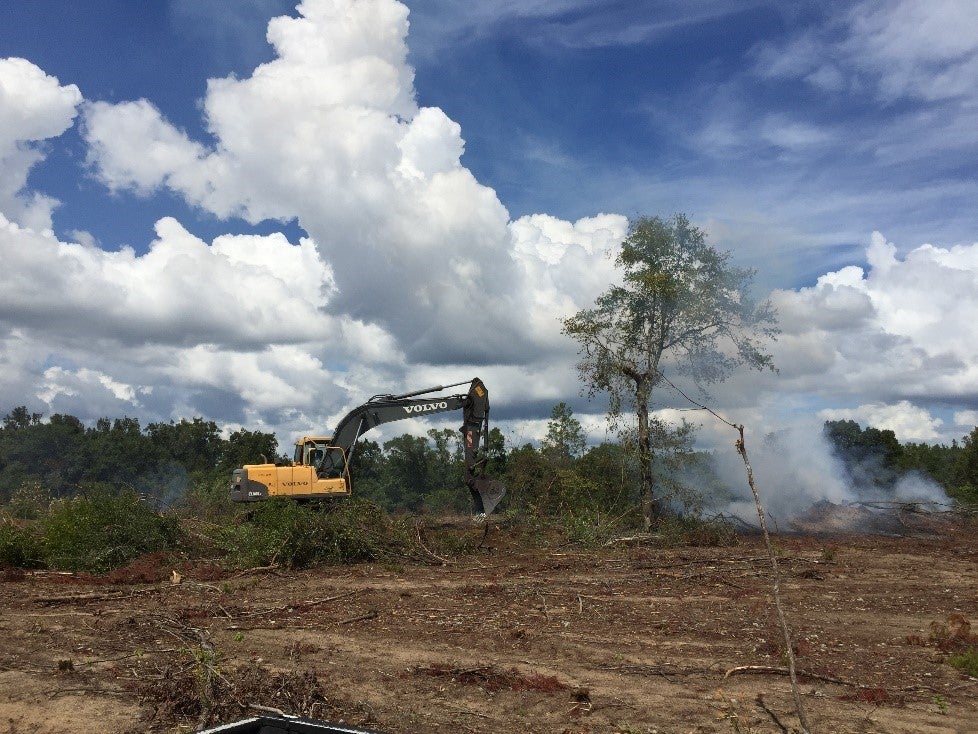
The Restoration is Not YET Complete
Restoration of Torreya’s Sweetwater sandhill habitat began in 2003, with a starting point of 4,700 acres in pre-acquisition sand pine plantation.
To date, some 3,526 acres (75%) has been logged, site prepped and replanted in wiregrass and longleaf pine by the Florida Park Service, along with assistance from The Nature Conservancy.
Below is a schedule of final project completion. All sand pine removal and the replanting of Sweetwater Creek will be complete in winter 2024.
| Year | Management Zone | Restoration Zone | Acres |
|---|---|---|---|
| 2020 | S 06, S 18 east | RZ 13 | 341 |
| 2021 | S 17 | RZ 14 | 353 |
| 2022 | S 07 | RZ 15 | 300* |
| 2023 | S 11, S 15, S 16 | RZ 16 | 334 |
| 2024 | S 13, S 14, S1 D | RZ 17 | 275 |
* 60 acres left sand pine
About the Author
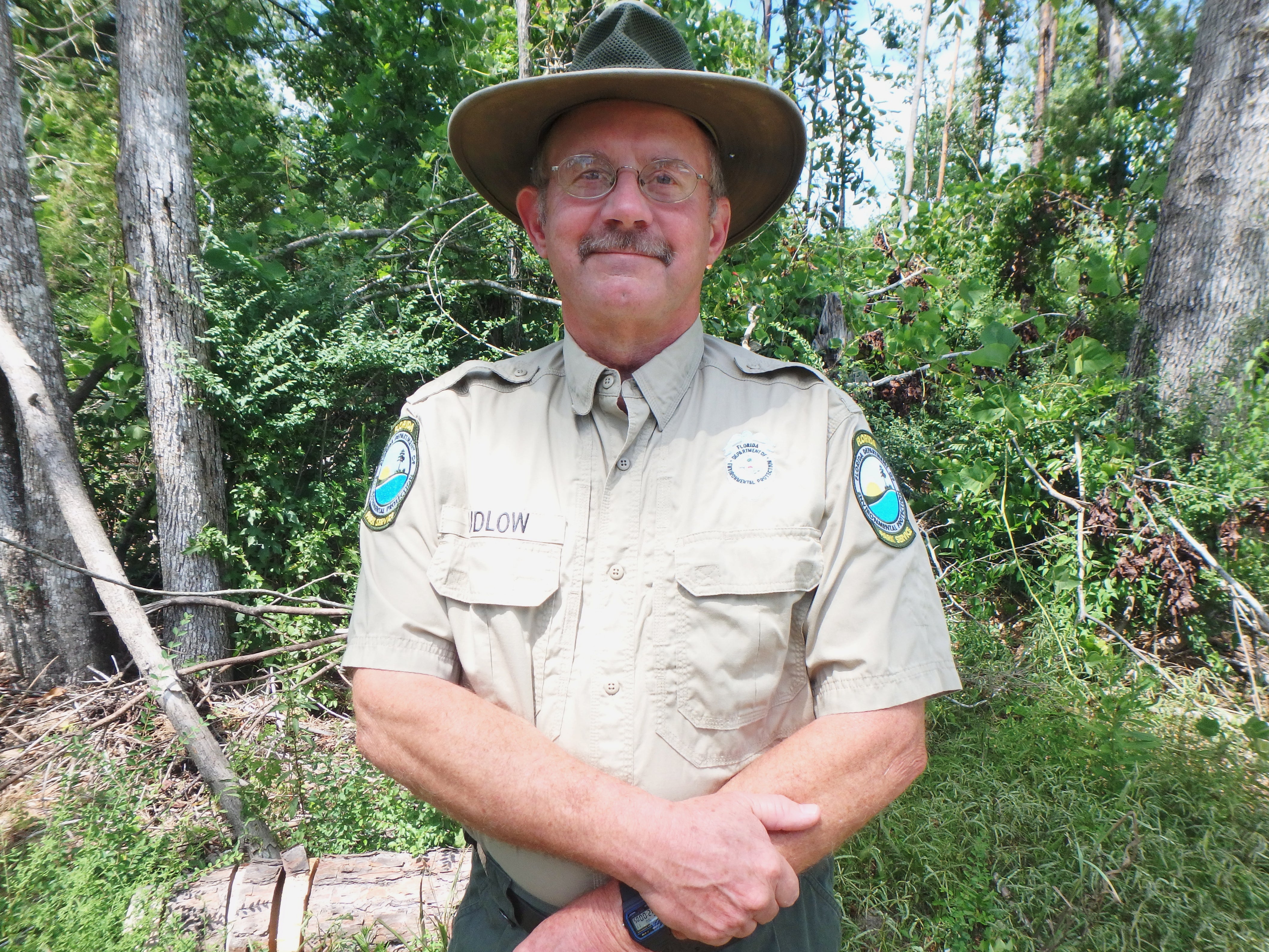
Mark Ludlow grew up in the Midwest and obtained a Bachelor of Science degree in Wildlife Biology from Colorado State University in 1977. After serving as a resident naturalist at a private reserve near Denver, he joined the Peace Corps where he conducted a biological inventory of the national park system for the Smithsonian Institute and Paraguayan Forest Service. He then attended the University of Florida under a grant from National Geographic to radio track ocelots in the llanos of Venezuela.
In 1987, he earned a Master of Science degree in Wildlife Biology. After graduate school, he conducted small mammal surveys in coastal Florida and made an aerial survey of manatees in Venezuela. He has also served as a Marine Mammal Biologist in southeast Florida where he conducted aerial surveys, necropsy and radio tracking of manatees and cetaceans.
In 1990, he advanced to the district biologist post at the Florida Park Service’s old District 5 (Clermont) office.
After three years, he transferred to the first park biologist position for Florida Caverns State Park. In 2006, he joined the team at Torreya State Park. Today, he is very proud to be a part of Torreya’s Sweetwater restoration! The project will benefit hundreds of plant and animal species as the project is very close to re-establishing 4,600 acres of North Florida sandhill.
About The Biologists Tell the Story Series
In this series, we will learn a little more about our biologists as they share stories of their work in Florida’s state parks. The leadership and scientific research our biologists provide is essential for our legacy of conservation and land management.
This series is an opportunity to connect these projects to the places where we ensure the health and sustainability of Florida State Parks.
